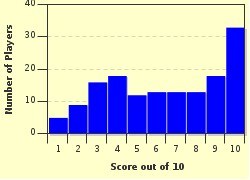Quiz Answer Key and Fun Facts
1. Which Swiss mathematician is the pioneer in the field of graph theory?
2. The usefulness and application of graph theory was first illustrated in the famous historical mathematical puzzle, which was eventually solved by Euler in 1736. The puzzle is known as the ___ Bridges of Konigsberg.
3. A typical graph notation is G = (V, E). The letter G means graph. The letter V stands for the vertices of the graph. What does the letter E denote?
4. Which of the following graphs are allowed to have loops and multiple edges in the drawings?
5. In general, all graphs can be further categorized into two types of graphs, namely directed graphs and undirected graphs. The former are those with orientation (indicated by arrows) and the latter are those without orientation. Directed graphs are also known as ___.
6. In graph theory, the degree of a vertex refers to the number of edges (or lines) incident with the vertex. It is denoted by deg(v) or simply d(v). What is the degree of each of the vertex of the Star of David diagram?
7. What is the maximum number of edges (or lines) that can be drawn for a simple graph with 10 vertices?
8. The handshaking theorem states that the sum of the degrees of an undirected graph is ___ the number of edges of the graph.
9. Graph coloring is one of the major subtopics under the field of graph theory. Perhaps the most famous and intriguing mathematical problem related to this subtopic is the ___ color theorem, which is also known as the ___ color map theorem. It states that for any 2-D figure that is partitioned into several regions, those regions can be colored with no more than ___ colors so that no two neighboring regions share the same color. What is the missing number?
10. Graph theory is unique because that its study is derived from other fields, yet at the same time, its formulas and theorems can be used back and applied in those fields to solve the problems in a simpler and more convenient way. Graph theory is used in which of the following field(s)?
Source: Author
Matthew_07
This quiz was reviewed by FunTrivia editor
crisw before going online.
Any errors found in FunTrivia content are routinely corrected through our feedback system.

